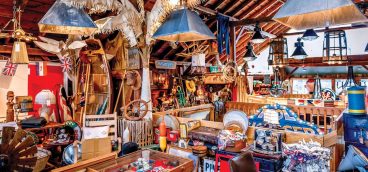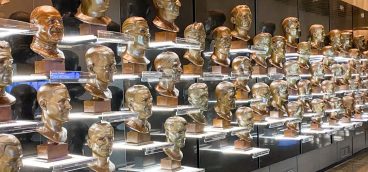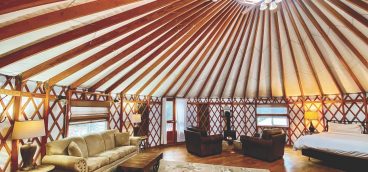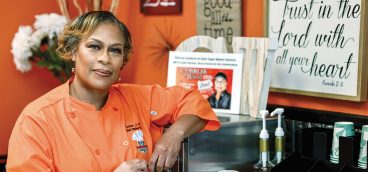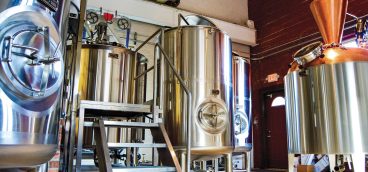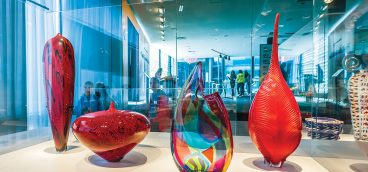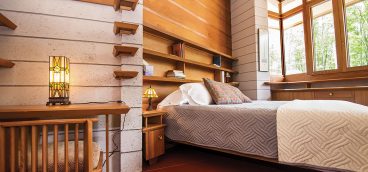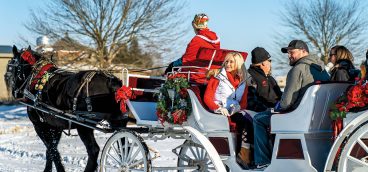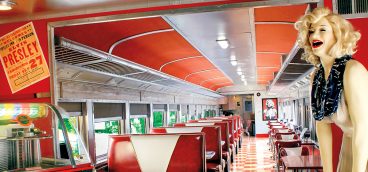Going to Gettysburg
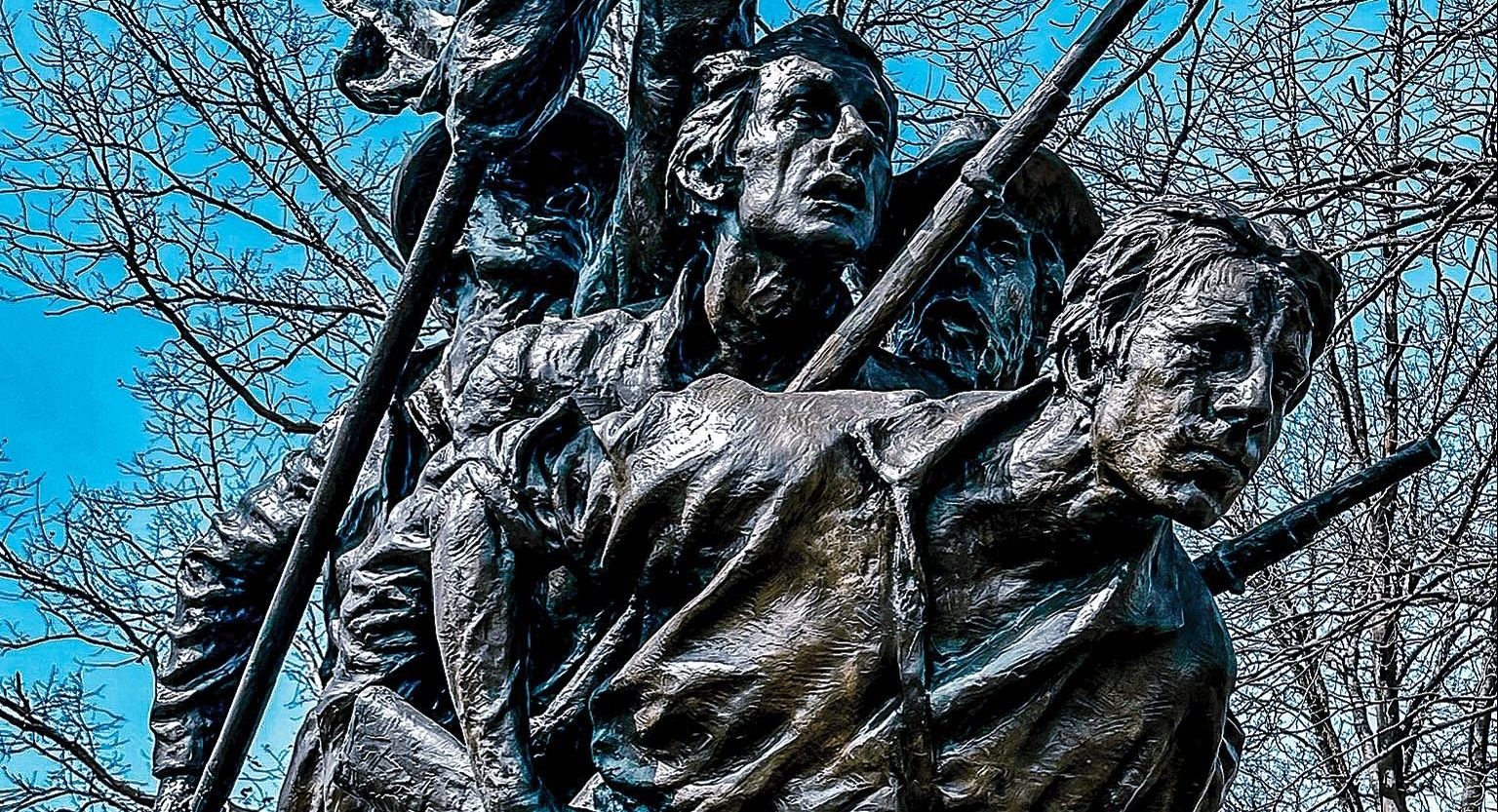
The battle of Gettysburg was fought from July 1-3, 1863, in temperatures nearing 90 degrees. Fighting in wool uniforms and long underwear, with water and food in scarce supply, the 160,000 troops struggled to survive under Confederate Gen. Robert E. Lee and Union Gen. George Meade, appointed to command the Army of the Potomac just three days earlier. With 50,000 wounded, missing or dead, it was the Civil War’s bloodiest battle and its turning point. At the battle’s height, five cannonballs were fired per second and could be heard 110 miles away in Philadelphia. It took 500 surgeons a week to perform the necessary amputations.
This year marks the battle’s 160th anniversary and a timely reason to visit Gettysburg, a town defined by those three days, but with much more to offer.
The ideal place to start your trip is the 139,000-square-foot Gettysburg National Military Park Museum & Visitor Center. An impressive overview will orient you to the battle and region. Watch the 20-minute film “A New Birth of Freedom,” and then, experience Pickett’s Charge via the Gettysburg Cyclorama. The restored 360-degree painting (which includes a three-dimensional diorama with sound and light effects) was created by French artist Paul Philippoteaux in 1884. At 377 feet by 42 feet, it is the largest painting in the U.S.

Next, immerse yourself in the Gettysburg Museum of the American Civil War. The 22,000-square-foot museum displays a fraction of one of the world’s largest collections of Civil War memorabilia and relics. There are an overwhelming number of exhibits that will give both the history of the battle and detail the clothing, munitions, living conditions, and participant stories.
At the Visitor Center, you can hire a Licensed Battlefield Guide (arrange in advance). While there are numerous ways to tour the battlefields, guides go through an arduous licensing process and provide unique perspectives. One option is a two-hour (or more) private tour in your car, focusing on whatever you would want — a general overview, something geared to kids, military strategy, etc.
An especially authentic way to tour the battlefields is via horseback with a Licensed Battlefield Guide. Hickory Hollow Horse Farm is an exceptional outfitter with well-trained horses and small groups that go out on trails to give a real feel for what it was like to view the significant locations from atop a horse.
There are numerous museums, homes and sites throughout the region of significance. Don’t miss the newly opened Gettysburg: Beyond the Battle Museum. While so many of the activities in the area focus on those three days in 1863, this museum starts in prehistoric times with a more expansive history, as well as that of the battle. Twelve interactive galleries display rare artifacts, relics and photographs. In one, visitors sit in a reconstructed home while outside the battle rages. Cannons boom, the house rumbles, and holes are shot through the walls, while you smell the ham left on the table from the family meal. You emerge afterward to see the home, riddled with bullet holes.
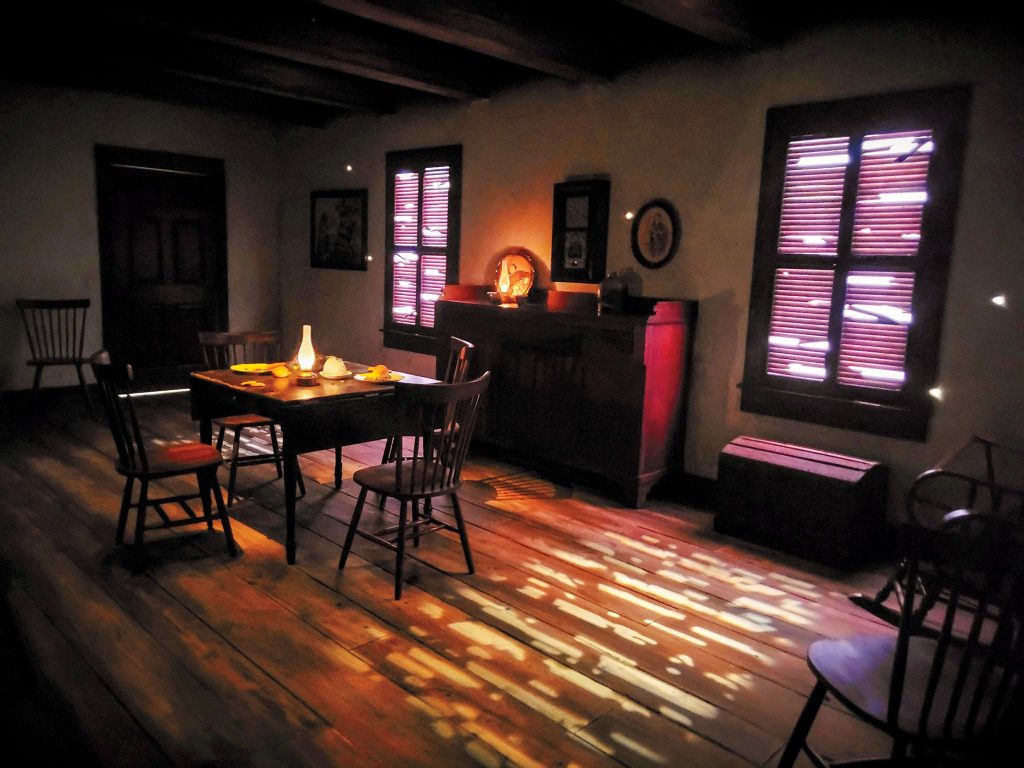
Also notable is “Ticket to the Past — Unforgettable Journeys” at the Gettysburg Lincoln Railroad Station, a virtual reality experience where President Lincoln arrived to give the Gettysburg Address. With thousands dead after the battle, inadequate makeshift graves for the Union soldiers were eventually transferred to newly designated land, now called the Gettysburg National Cemetery. There, 3,512 Union soldiers are interred along with veterans of the Spanish-American War and World War I, as well other conflicts. On Nov. 19, 1863, the cemetery was consecrated. The main speaker was famed orator Edward Everett, who spoke for two hours. Lincoln was suffering from a mild case of smallpox at the time and his 272-word speech was considered by some to be a flop in an era when long speeches were a form of entertainment. Today, it is considered perhaps the greatest speech in American history.
Kids will enjoy exploring Children of Gettysburg 1863, an interactive, family-friendly museum encouraging hands-on learning. The Eisenhower National Historic Site allows visitors to see the weekend retreat and ultimate retirement home and farm of our 34th president and his wife, Mamie. Whether they were hosting world leaders such as Charles de Gaulle, Winston Churchill or Nikita Krushchev, or raising Black Angus show cows there, this farm was beloved by the Eisenhowers and the only home they ever owned.
Adams County is Pennsylvania’s largest apple producer and fourth biggest in the U.S. Whether apples, berries or stone fruits, opportunities for fruit-picking abound, as do farm stands and various festivals north of Gettysburg in the Biglerville area. Hollabaugh Bros. offers pick-your-own fruit and flowers, a farm store with ice cream, fresh baked goods, candy, cheeses, meats, vegetables, plants, and classes. The National Apple Museum, in a restored 1856 barn, shares the regional apple industry history, including farm implements, beekeeping and pest management, with an apple-themed gift shop.
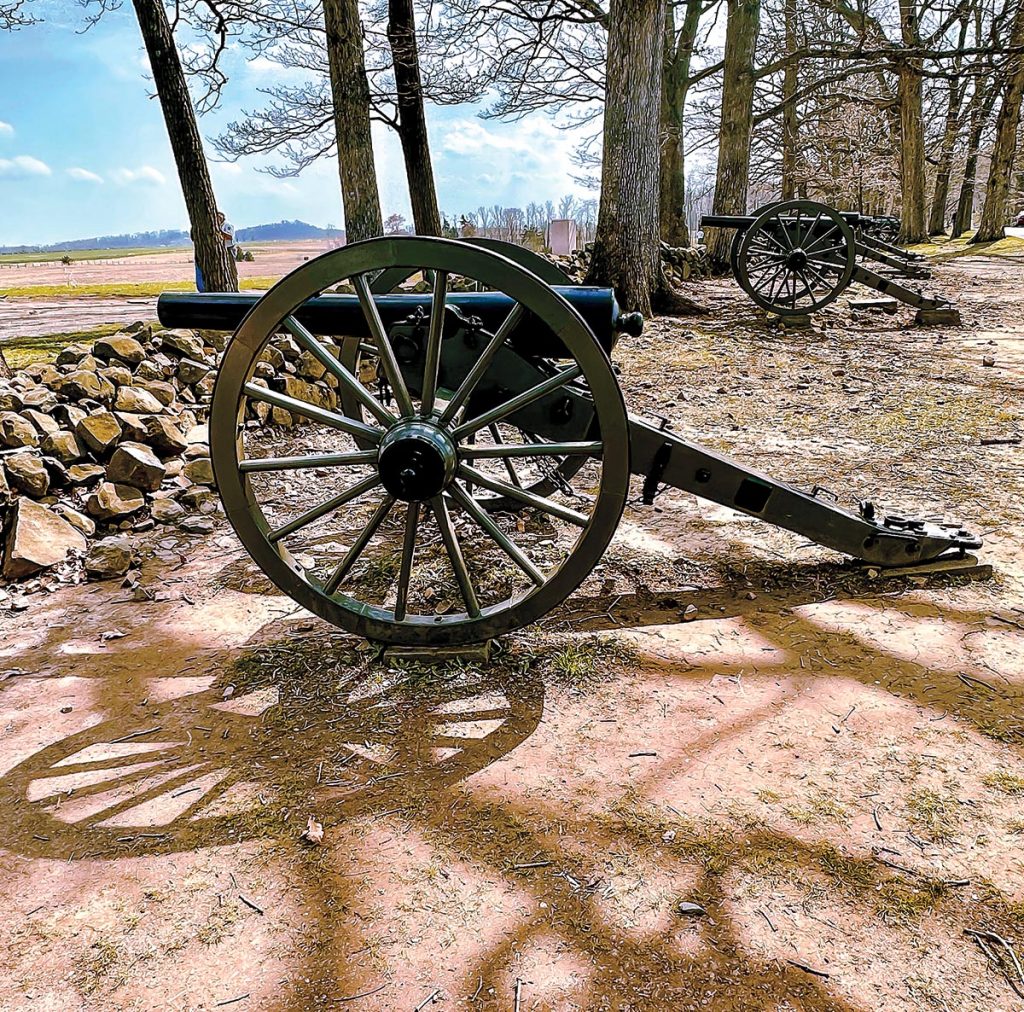
Adams County promotes its wineries, distilleries, breweries, cideries and meaderies via a “Pour Tour” and a similar “Crop Hop” from May through December. Ghost tours are also popular with some.
Lodging options range from chain hotels to B&B’s, but a real gem is the Federal Pointe Inn. Located in the former 1896 Meade School, Gettysburg’s first high school, it was beautifully restored by third-generation hotelier Peter Monahan. The 23-room boutique hotel features 12-foot ceilings, antique furniture, granite bathrooms and a charming schoolroom-themed pub on the lower level. The corner whirlpool rooms are huge and worth the upcharge.
The Historic 1776 Dobbin House Tavern is the best-known dining option. Gettysburg’s oldest house was the home of a minister (and father of 19) who was instrumental in settling the town. Whether in the formal Alexander Dobbin Dining Rooms or the more casual Springhouse Tavern, the Colonial-themed food is delicious. Tours show where runaway slaves hid on the Underground Railroad.
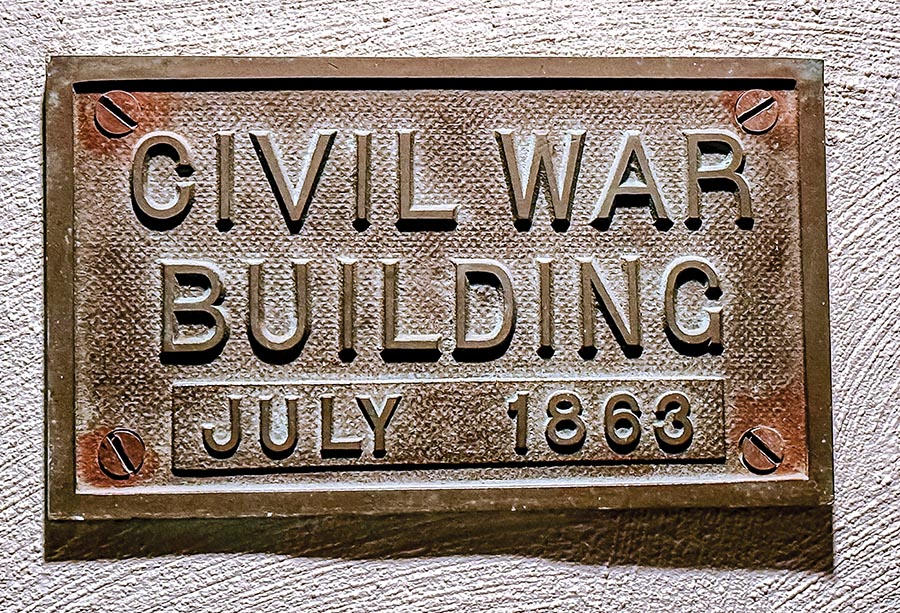
Farnsworth House Inn Restaurant and Sweeney’s Tavern offer Civil War dining with waiters in historic attire serving famous peanut soup, game pie and pumpkin fritters, as well as traditional fare, surrounded by memorabilia from the film “Gettysburg.” The outdoor beer garden is perfect for people-watching on a hot day. For breakfast, get coffee and overnight oats or a breakfast sandwich at the Ragged Edge Coffee & Catering. The Lincoln Diner has good, old-fashioned diner grub. The Livery Bar & Grill at The Inn at Herr Ridge has lots of tasty options, but don’t miss the in-house smoked barbeque and homemade chips. It’s hard to find a seat, but Hunt’s Battlefield Fries & Café has great cheesesteaks and fries, made even better washed down with an icy, local root beer. Among the ice cream shops, Mr. C’s homemade confections are exceptional.
Souvenir stores are everywhere, but if you have time for just one shopping stop, go to The Horse Soldier. It has military antiques focusing on the Civil War. Whether you are interested in a $50,000 Confederate officer’s coat or a $2 Minié ball (bullet), they have them — along with uniforms, weapons, books, photographs, medical instruments, documents and a staggering array of memorabilia.
A trip to Gettysburg is always interesting, but this anniversary year is especially meaningful. You can get information and links on all of the places mentioned at www.destinationgettysburg.com. Summer is especially busy, so reservations are highly recommended.

